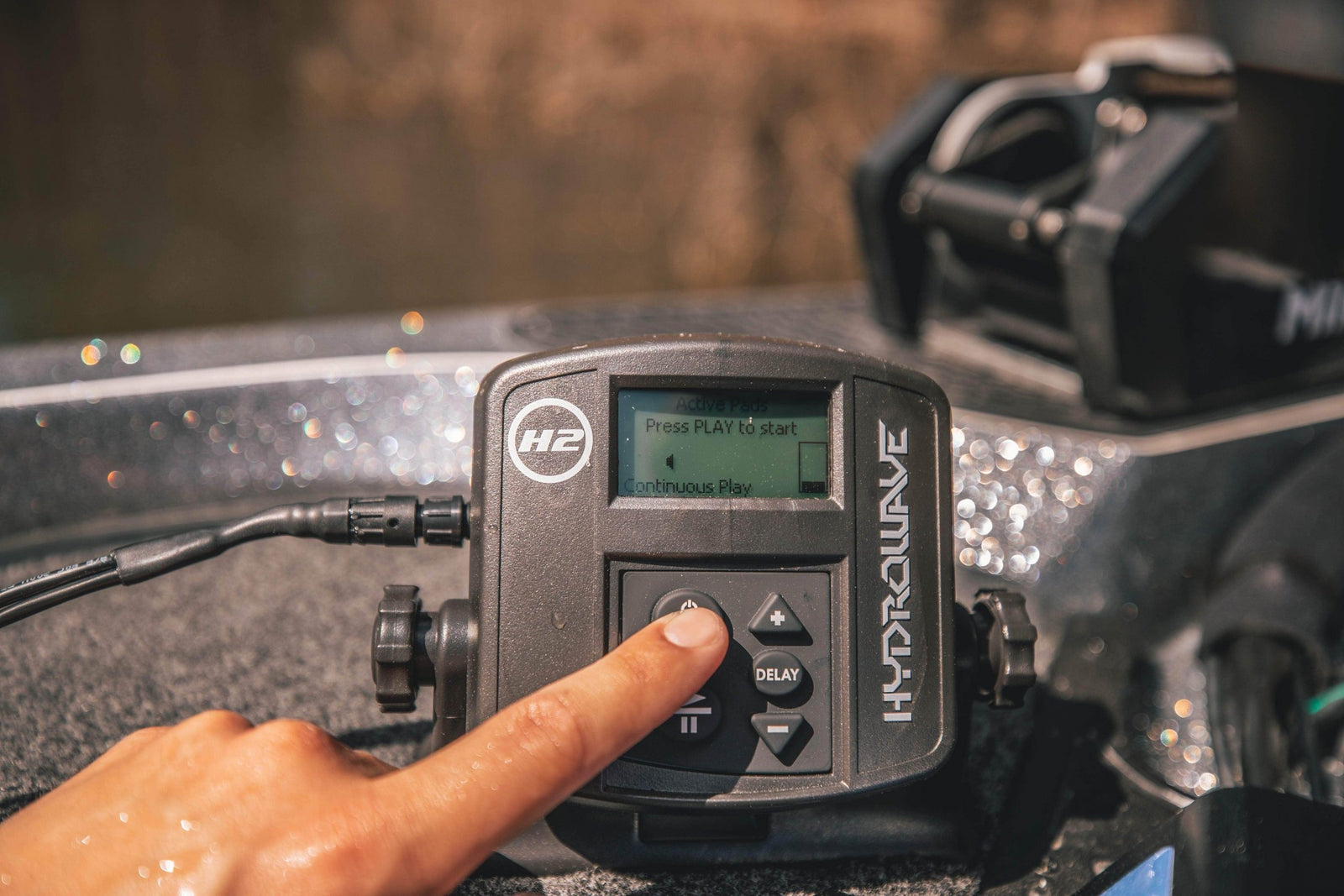Although there is no perfect imitation of the sounds that occur in nature, the Hydrowave H2 system seems to deliver a quality product that will help stir up bait fish and cause predator fish to attack. With programmable settings, the system is able to mimic various sounds found beneath the surface of the water. Many anglers have purchased older systems and opted in for the newer version when it was time for a replacement. It is estimated that approximately 90% of the pros are using one of these units.
What is the Hydrowave H2 and How Does it Work?
The Hydrowave H2 is a sound system that consists of a programmable 2.5-inch liquid display and wired waterproof speaker that is usually mounted on the trolling motor. It can be used in both shallow and deep water because the sound patterns can be triggered vertically and laterally.
Sound is vital to predator fish because it helps make up for the limitations of sight and smell. By using sound, they can better detect the location and direction of travel of bait fish. There are sound patterns that so closely imitate nature that they often attract bait fish and help them come closer to where the sound is coming out. When playing certain sounds, it can assist by triggering fish into biting. Most anglers know to be quiet on a boat because the fish are always listening. In that regard, since the fish are always listening, why not give them something to listen to that tricks them into feeding?

Does the Hydrowave H2 Really Help to Catch More Fish?
Sometimes fish seem to stand still in natural environments. That is, of course until something stirs them up. When bait fish become more active, typically predatory fish will too. For instance, if a school of shad suddenly become panicked, the bass in the surrounding area can be enticed into action. There is a setting which mimics the sound a predator fish makes when sucking in their prey. Other sound settings include crushing (disabling prey), regurgitation, and even bait fleeing from predators. This draws out the competitive spirit in other bass that do not want to miss an opportunity; think of it like ringing the dinner bell.
Which species does the Hydrowave H2 target?
Bass are a common fish the system targets, but customers have reported positive, reactionary responses from other predatory fish also. The key is finding the right sound setting that best fits that environment. If you can get the fish to become more aggressive, they are more likely to show up on a fish finder. Locating schools of fish is half the battle, while the other half is stirring them into action.
What are common mistakes while using the Hydrowave H2?
On a positive note, giving anglers adaptability to the environment allows them to adjust the volume and frequency of impulses. This can be used as an advantage but if overused, it can work against you. One key to remember is to start slow and quiet, while observing how the fish react. If too aggressive from the start, it might not come across as natural to them. It is better to adjust the volume and level of aggression in moderation.
Adjusting the settings to fit the surroundings is another important thing to remember. If it is summer and windy, it might call for a loud and continuous setting. However, the calmer environments require more passive sounds to not scare the fish. The system can also be overused. If a frenzy does start, it might be best to turn it off and try to catch some fish while they are active. There is no need in getting them overly aggressive and fed long before they have a chance to find your bait.
The delayed setting helps to alleviate the manual adjustments by sending out impulses intermittently at specified time increments. Learn to pay attention to what the fish hears and experiment with a Hydrowave H2 to mimic that environment.













1 comment
Wanted hydrowaveforvbass & crappie